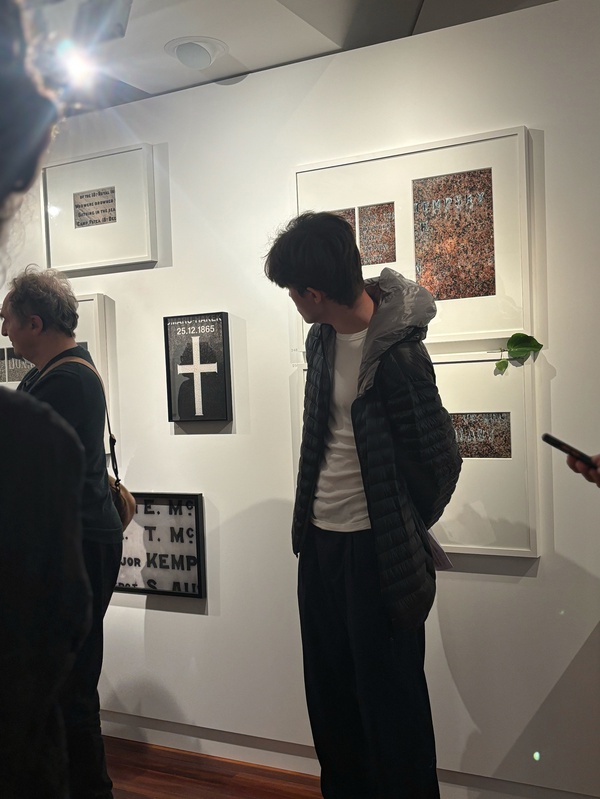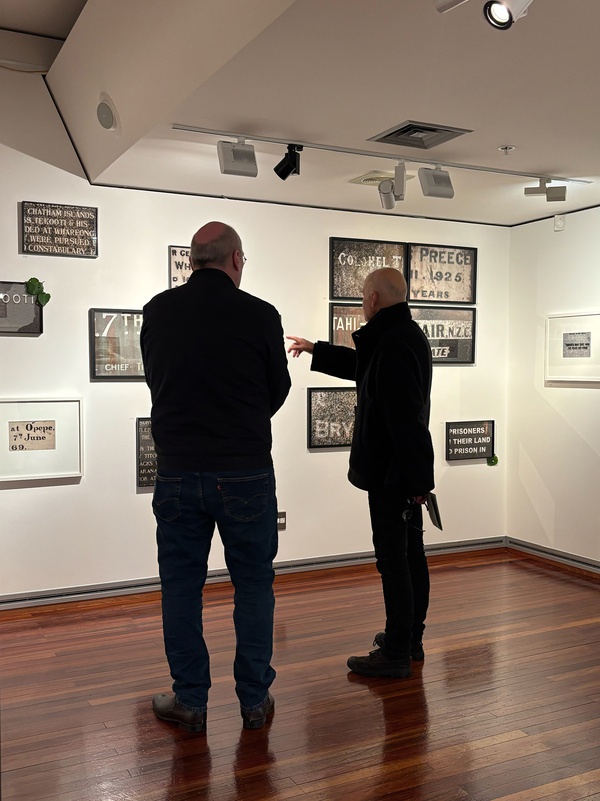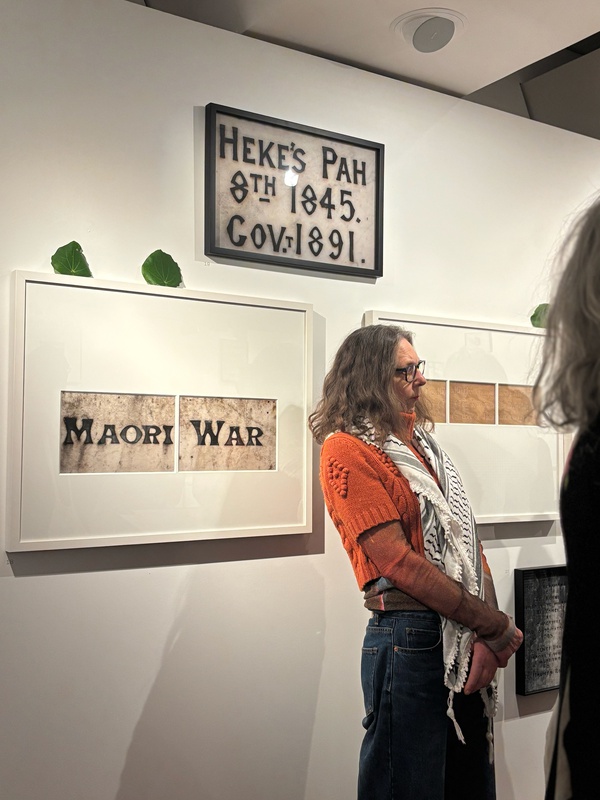briefs
2025-08-20
National Library opening talk, 15 August 2025

The ‘A Vocabulary’ exhibition, a vocabulary of colonisation, opened at the National Library, 15 August 2025 through 16 November 2025.
kia ora, Alison McIntyre, thank you.
kia ora everyone, tēnā koutou katoa.
thank you Dale Cousens and Nate Rowe for the beautiful blessing this morning .. ‘A Vocabulary’ was calling out for that tikanga. Tēnā kourua.
and Tanēmahuta Gray for the mihi whakatau. Tēnā koe.
and thank you all for being here.
I want also to acknowlege the tangata whenua of where we stand right now, Te Atiawa, Taranaki whānui.
*
thank you, Catherine Griffiths for your worldliness, knowledge, our endless kōrero and our endless support for each other. And for the layout and design of the ‘A Vocabulary’ exhibition, and, of course, our work together on the eponymous and behemoth book. Not to mention being stepmother the past 30 years to my five children and five grandchildren. Whew!
*
thank you Dr Rangihīroa Panoho for your important essay, commissioned for the book, excerpts from which are in two gallery vitrines.
*
thank you Andrew Clifford, when director at Te Uru (now the Sarjeant), for embracing this work before it was even made
*

thank you National Library director, Peter Ireland, for seeking out ‘A Vocabulary’ when the show seemed destined to fall short of Te Whanganui-a-Tara, and for the kind and generous attention of your National Library people, especially curator Fiona Oliver, a super communicator.
*
thank you Creative NZ for your long, valuable support from the outset of this project, and then buying copies of the book to send to your connections overseas.
*
I want to acknowledge my late, dear friend, of whom many of you will have known, Luit Bieringa, who showed and toured ‘South Africa’, my first major public gallery exhibition .. 1986, the National Art Gallery, Buckle Street, before it became Te Papa Tongarewa .. I hardly knew Luit back then, but I rang him anyway, in the days when you could ring a director of a national gallery, and even knew who the director was .. I said: I think I have something good from South Africa, a journey through apartheid (I was there with NZ Listener writer, Vernon Wright who might just be in the room) .. it was a three-minute conversation in which he said: “I’ll put aside the main gallery” .. the days when the art life was simpler.
‘South Africa’ and ‘A Vocabulary’ are connected.
*
Catherine and I were at a well-attended rally and march for Palestine the other day, in Henderson, Waitākere, the suburbs of Tāmaki Makaurau – we live in the bush on the western fringes of the ‘super city’ — a Labour shadow associate minister spoke with deep compassion at the rally about the genocide of the Palestinians .. it was not the moment to equate the colonisation of Aotearoa New Zealand, but I did note the absence of any comment about what did happen in Aotearoa.

That colonisation is what my exhibition is about, through mostly the texts and parts of the texts on victors’ memorials, a vocabulary of colonisation. While amidst the field work, 180 memorials and some gravestones all over Te Ika a Maui, driving home alone one evening, my thoughts wandering, it struck me that if, in your mind, you turn those victor’s memorials around 180°, you see, very strongly, Māori resistance to that colonisation, a brutal colonisation that continued after the wars and the raupatu land confiscations (18,000 British troops here at peak), through tricky and punitive government legislation, which continues unabated today in the buildings across the road (Parliament).
You know, there’s a gravestone for Edward Gibbon Wakefield. A familiar name. We were taught in school he was a New Zealand hero. It lies flat next to his brother and their wives, very well-maintained, not 500 metres from here and the executive branch of parliament, in Bowen Street Cemetery, one line on which says .. ‘the author of the system of colonisation’. That imagework is in this show.
The final work in the exhibition, a spoiler I’m sorry, is a statement on a 1920 memorial in Symonds Street, Tāmaki Makaurau, ‘through war, we won the peace we know’, an obscene sentiment, and a current goal in the Middle East, where Aotearoa New Zealand has troops. Everything is connected.
Please enjoy the two shows. Tēnā koutou.
BRUCE CONNEW / 08.2025
images of the artist floor talk, @studiocatherine
